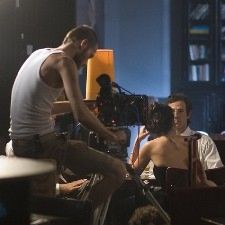Choose a Movie's Plot ... While Watching It!

You have just watched a gripping movie, but the ending turned out to be a big disappointment. Can't do anything much about it, can you? Think again. A new movie format developed by Tel Aviv University lets the viewer change the course of a film with the click of a button.
Prof. Nitzan Ben Shaul of Tel Aviv University's Department of Film and Television has made a film titled 'Turbulence' that has multiple outcomes and allows viewers to determine the plot of the movie.
Utilizing complicated video coding procedures, the new format provides smooth interaction and transition between scenes as the members of the audience watch, giving them the power to determine the plot of the movie, not just the climax.
The film gives people the suspense and thrill of multiple outcomes like those of the films Sliding Doors or Run Lola Run, but it also gives them the power to really choose and influence at a number of key points how the plot of the movie will proceed, said Ben Shaul of Tel Aviv University's department of film and television , the brain behind the innovation, in a statement.
In addition, curious viewers can also go back to the narrative crossroads to see what might have been, never seeing the same ending twice.
With the innovative format, a viewer watches the film on a regular or a touch-screen monitor, and an sparkling glow appears on certain action items at pivotal plot moments.
The viewer can choose whether or not to interact. If the viewer wants to interact, he can click or touch the screen to change the course of a situation.
Shaul's movie 'Turbulence' runs for 83 minutes, excluding viewer interactions. With interactions, the length of the movie varies from one to two hours.
Made with a unique scene-sequencing technique, the movie funded by the Tel Aviv University Technology and Science Committee, recently won a prize at the Berkeley Video and Film Festival for its technological innovation.
Moreover, the movie is suitable for new touch-screen technologies like iPads or personal airplane movie players.
The movie can also be seen in groups. An individual can be chosen to make the choices, or majority vote can rule.
It develops optional thinking and can change the way people consume media and advertisements, says Prof. Ben Shaul, who received his Ph.D. from the Cinema Studies Department at New York University.
© Copyright IBTimes 2025. All rights reserved.





















